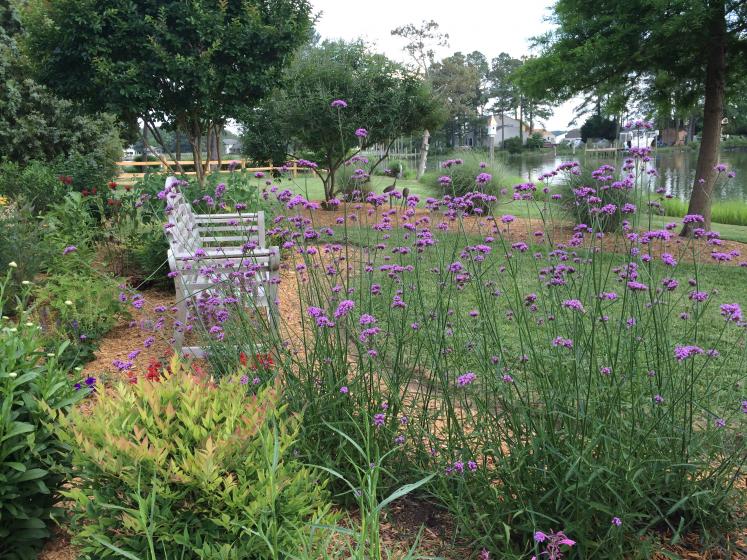MAKE MARCH YOUR TIDY-UP TIME IN THE GARDEN.
by Kathy Van Mullekom, a lifelong gardener and gardening writer living in York County, Virginia
I used to faithfully clean up my perennial garden in late fall, cutting stems down to the ground and cleaning up any fallen debris – that is, until I got into pollinators and beneficial insects and the whole healthy environment thing.
After reading how beneficial insects can spend winter hunkered down among the stems and foliage of dormant perennials, I changed my ways.
Now, I allow all those perennials – bee balm, coneflowers, verbena, fennel, salvia and others – to stay there until early March when I tidy up everything, making sure I don’t disturb any emerging new foliage. I also make sure I don’t step on crowns, or the place where the stem meets the roots. Planting perennials with the crowns barely above soil level helps keep the plants from rotting, especially in winter when the cold rains and snows can take their toll.
My huge perennial garden -- nicknamed my “B3 garden” for birds, bees and butterflies – doesn’t exactly look the best from the window of my sitting room, but it’s in the backyard where I enjoy it most and no one from the street can see its unruly behavior.
This winter, my newly planted mountain mint hosted bees as late as December, and the seed heads of Brazilian verbena were fine dining for finches.
Using bypass hand pruners, I snip each herbaceous perennial stem as close to the ground as I can, and put all the dead material in the trash. Don’t tug on the stems or you could risk dislodging the roots. You can cut the stems into small pieces and place them in the compost pile if you are sure they are disease free.
While pruning, I also take time to remove any weeds around the plants, knowing my next garden project is spring mulch!
PHOTO: Brazilian verbena in the winter waits for its spring haircut, so it can once again bloom beautifully in summer in Kathy Van Mullekom’s garden.

